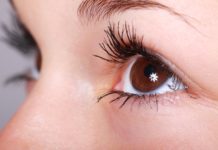Today, savvy spa-goers are well aware that Eastern and Western massage have very different approaches to the body based on the health philosophies of their culture. Western massage focuses mainly on the external physical body and its goal is to make it as comfortable as possible. Eastern massage goes far beyond this by also considering the energy flow through invisible channels within the body. It aims to restore the whole person, both external and internal, to a state of balance.
The resurgence of Thai massage (also known as yoga massage) is a wonderful doorway through time to reconnect with the primal wisdom. It is an absolutely unique style of massage, which is based upon the principles of compassion. This sacred bodywork is one of the four branches of the ancient Thai medicine; manipulation (massage falls under this branch), medicine, diet and spiritual ceremonies or magical practices.

It is believed that Thai massage originated in India and that it was brought over to Thailand about 2.500 years ago and mixed with indigenous as well as Chinese forms of massage after it arrived. Consequently Traditional Thai Medicine, which includes Thai massage, deeply reflects the Buddhist background. The Buddhist values, the four divine states of mind are deeply instilled in the Thai people: Metta, goodwill and loving kindness, Karuna, compassion, the desire to help others, Mudita, sympathetic joy, gladness for the good fortune of others, Upekkha, impartiality or equanimity; which the Thais as spiritual ideology sum up simple as “Do good and good will follow; do bad and bad will follow”.
Thai medicine is regarded as a perfect spiritual practice and this is why has held such an important position in the activities of the Thai temple.
Thai massage, this genuine form of bodywork with a very ancient and honourable tradition, is an amazing synthesis of many techniques, leaning pressure, reflexology, energy line work, stretching, blood stopping (the practitioner applies pressure to a major artery) and yoga. To achieve all of these effects, the therapists use various parts of their bodies including palms, thumbs, feet, elbows, forearms and knees. The massage is done on a mat on the floor, and both the person giving the massage and the person receiving it are dressed in light, loose comfortable clothes that allow easy movements.
The truly good Thai masseur performs this art in a meditative mood, starting with a prayer. This meditative mindfulness gives the power to sense energy flows and treat the person according to his/her needs. It is an art of giving and compassion, which nourishes both the giver and the recipient.
It is based on the concept of invisible energy lines running along the body; this is linked to ancient yoga philosophy, which states that we receive energy (prana) via a network of 72.000 energy lines that interconnect along our body. Thai massage focuses on ten key lines, which power all our physical, mental and emotional processes, so when there is an imbalance the body’s harmony is disrupted, causing pain and diseases. Massaging on these lines, we stimulate energy flow and restore general well being.
Although Thai massage does not traditionally address the psychological aspect of the bodywork, massage by its very nature does, and certainly Thai massage is no exception. Since it uses also movements, it can have an even greater psychological impact. Through heightened awareness of holding patterns, movement can be a powerful tool to connect with subconscious memories held within the body. The body stores memories of all of the life’s experiences; nothing, no matter how inconsequential, painful or enjoyable, is censored.
Due to the interconnectedness of all the body systems from the level of microscopic cells to entire organ systems, when all working in harmony that is the way to provide the balance necessary for the deeper sense of well-being we all yearn for.
For more information on the Four Season Chiang Mai www.fourseasons.com/chiangmai











